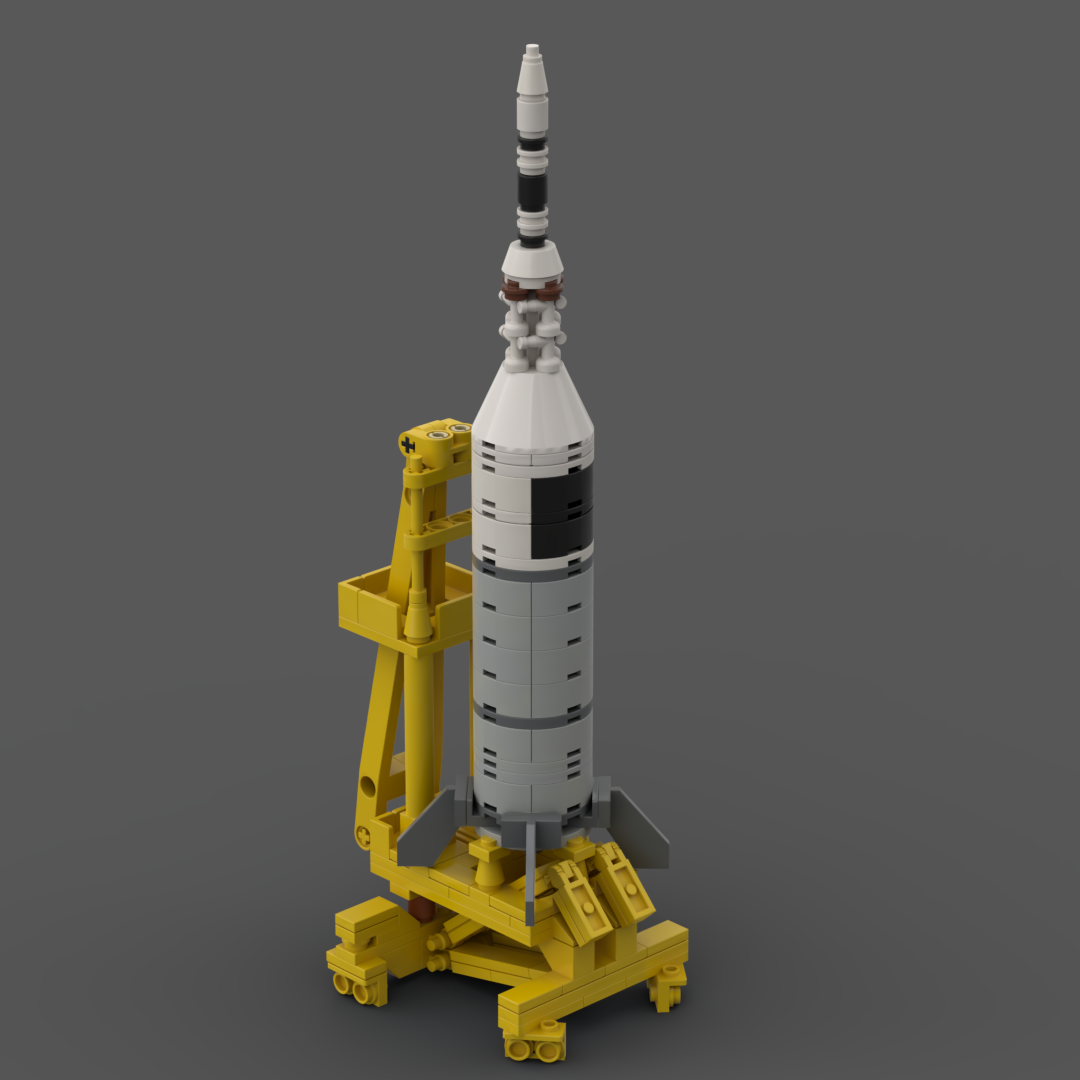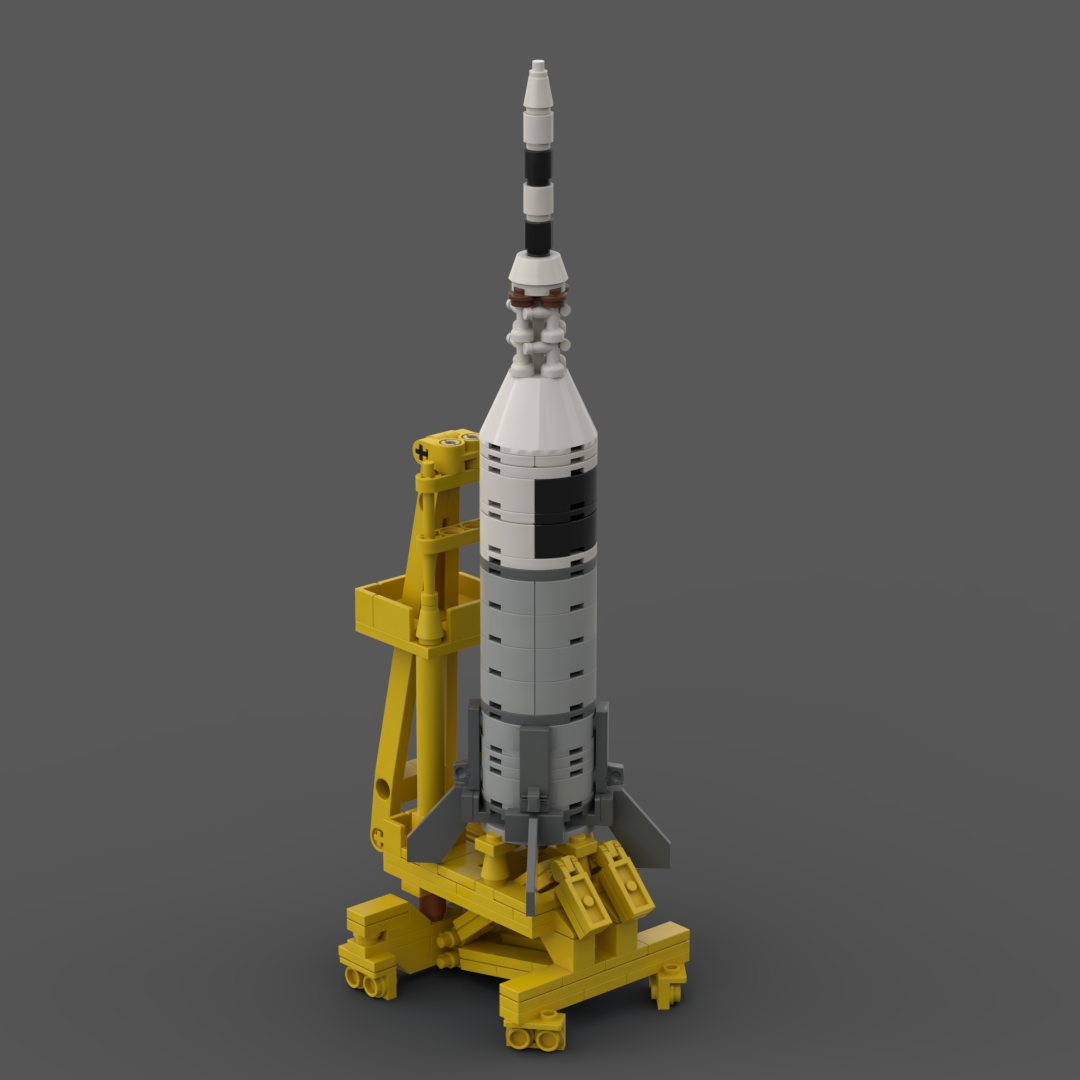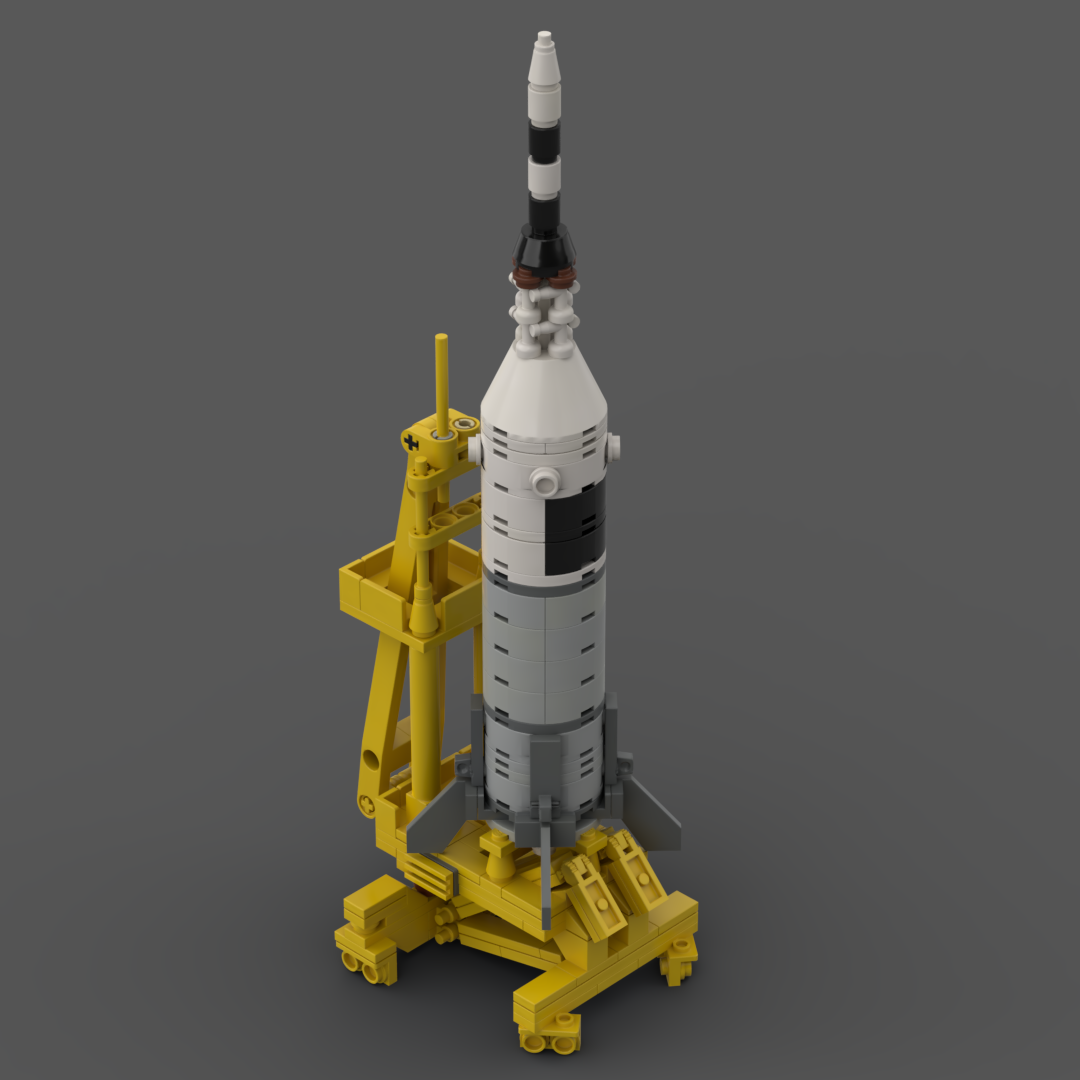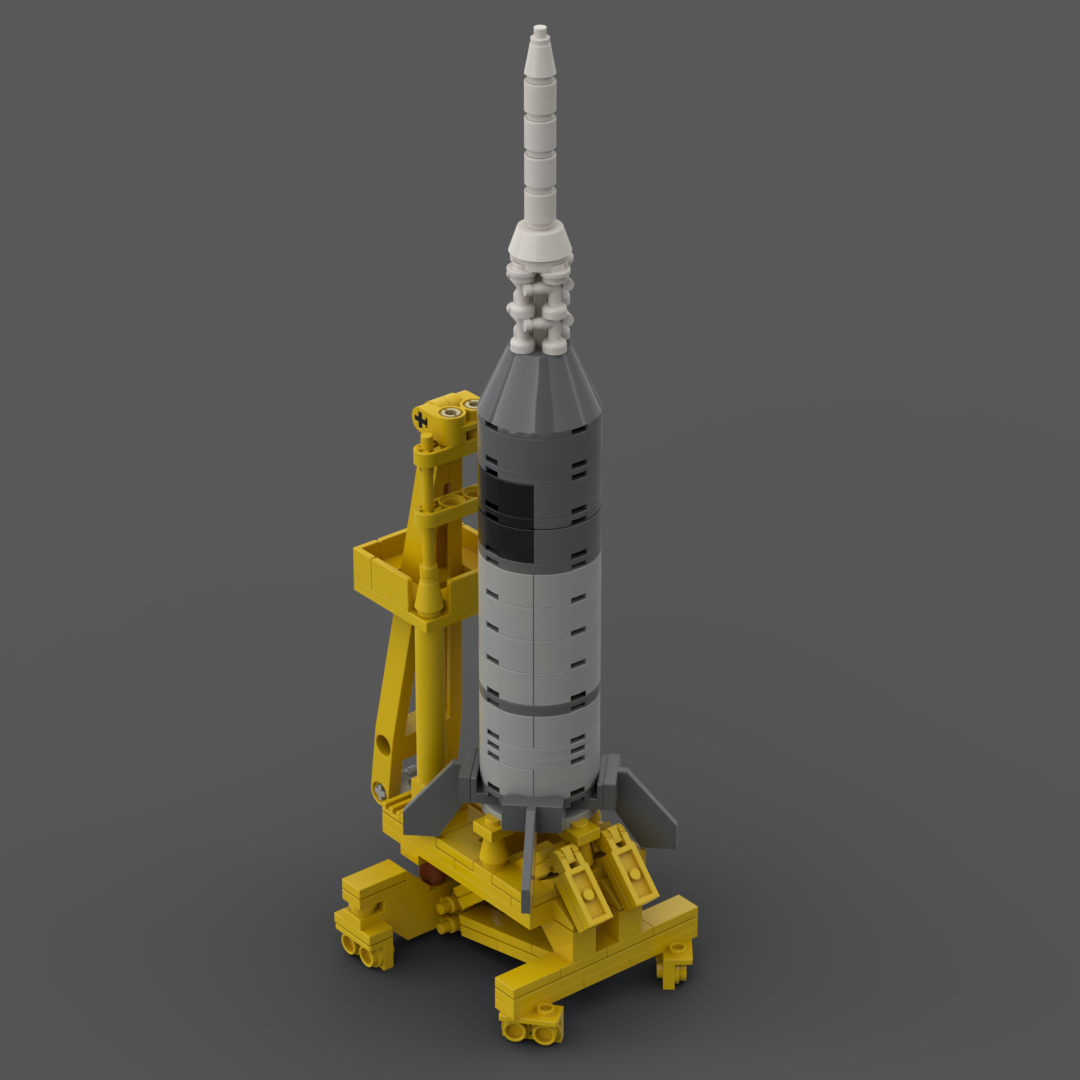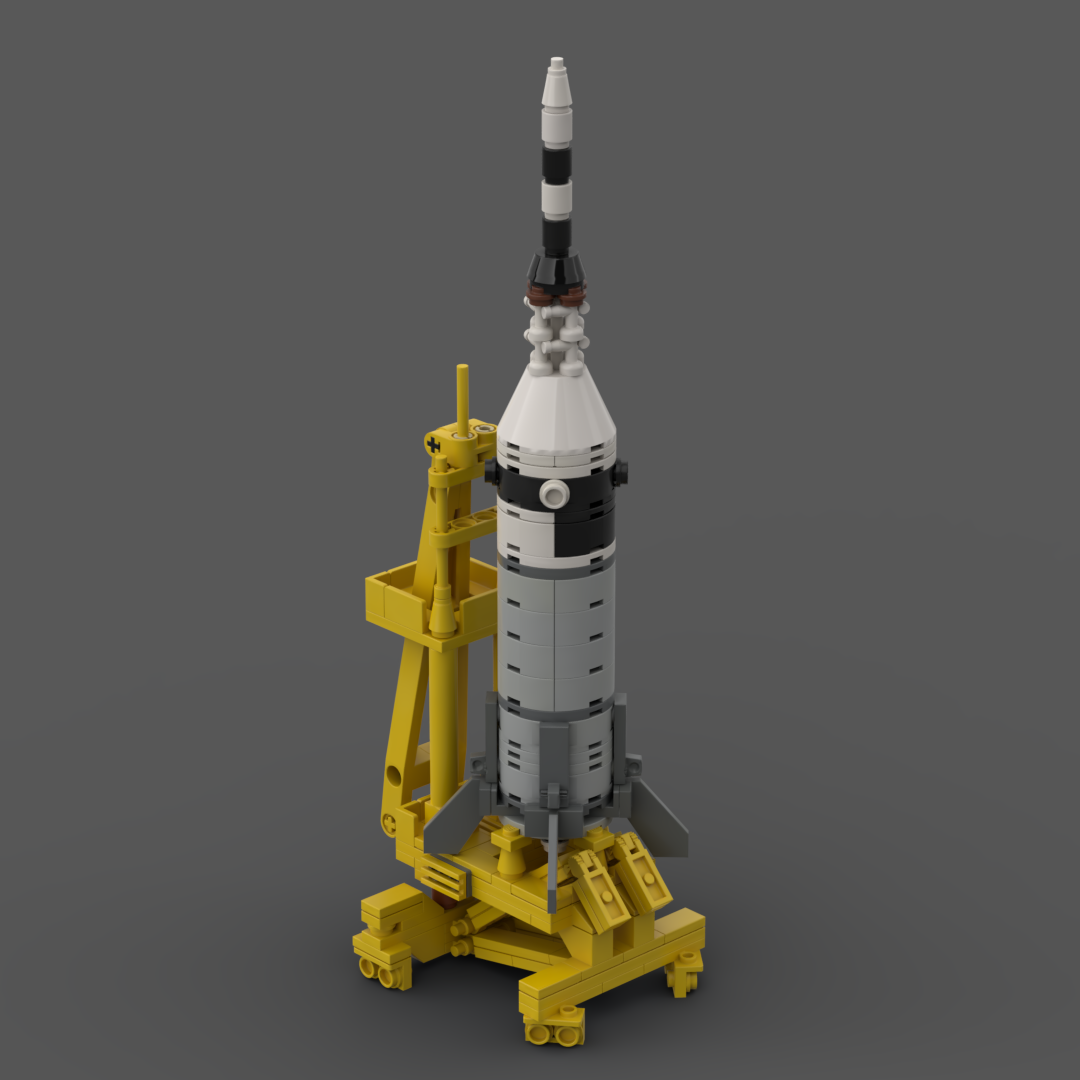
LEGO Designer:
Adam Wilde (Apollo 110)
Designed:
October 2020
Categories:
Apollo Program, All, Launch Vehicles, Space Agency - NASA, Suborbital and Sounding Rockets
Launch Vehicle Details
Stages:
Length:
Diameter:
Mass at Launch:
Low Earth Orbit Capacity:
Total Thrust:
Apogee:
Class:
Little Joe II was an enlarged version of the Little Joe concept used during Project Mercury. The Purpose of Little Joe II was to test the capabilities of the Apollo launch escape system.
Several dozen newsmen gathered at White Sands Missile Range, New Mexico, on 19 May to watch Mission A-003, an abort test of a boilerplate spacecraft at an altitude of 35,000 meters. At 6 that morning, the Little Joe II ignited and rammed its payload skyward. A few seconds after liftoff, a fin-vane at the base of the booster stuck and started the 13-meter-tall spacecraft-booster combination spinning like a bullet. Twenty-six seconds into the flight and still on a true course, the vehicle started coming apart. The abort-sensing system signalled the launch escape tower rocket to fire and pull the spacecraft away at an altitude of 4,000 meters.
While newsmen watched the fluttering remains of the Little Joe II, BP-22’s parachutes lowered it gently to the desert floor. Apollo had another answer: the launch escape system worked in a real abort situation.
Little more than a month later, on 29 June, the launch team in New Mexico prepared to test an abort off the pad. The year before, a similar test had proved the escape tower rocket could jerk the spacecraft safely away from an exploding launch vehicle. But both the spacecraft and its escape system had since gained weight. In the second test, the rocket pulled the spacecraft higher in the air and farther downrange than expected.
A follow up investigation of the incident of 19 May 1965 found the following key points:
a) At approximately one second after liftoff, the Fin IV elevon moved in a direction to cause the observed clockwise rotation and at 2.5 seconds reached the fully deflected position where it remained until vehicle breakup.
b) Although computer simulations of the flight with Fin IV fully deflected did not precisely duplicate the observed dynamic motions, sufficient correlation existed to conclude that Fins I, II, and III functioned normally while Fin IV alone caused loss of the mission.
c) The complete attitude control system, exclusive of the Fin IV hydro-electrical servo loop, performed correctly as designed.
d) The most probable cause for the failure was a malfunction in Fin IV hydro-electrical servo-loop due to an internal mechanical failure of the servo-valve.
Downloads
This model is a reworked and updated version of Grant Passmore’s Little Joe II.
Part count: 235 bricks, 75 lots.
| Unit | width | length | height |
|---|---|---|---|
| Studs | 14 | 13 | 33.3 |
| Inches | 4.4 | 4.1 | 10.5 |
| Centimetres | 11.2 | 10.4 | 26.7 |
Nr TNr Vehicle Date LS Payload
8 1 Little-Joe-2 (6-1-0) 28.08.1963 WS LC-36 * QTV
9 2 Little-Joe-2 (6-1-0) 13.05.1964 WS LC-36 * Apollo 001 (BP 12)
10 1 Little-Joe-2 (4-2-0) 08.12.1964 WS LC-36 * Apollo 002 (BP 23)
11 1 Little-Joe-2 (0-3-3) 19.05.1965 WS LC-36 * F Apollo 003 (BP 22)
12 1 Little-Joe-2 (5-2-2) 20.01.1966 WS LC-36 * Apollo 004 (CM 002)
Launch sites:
WS = White Sands Missile Range, New Mexico, USA
Launch History information from space.skyrocket.de
Launch History information from space.skyrocket.de


